What North Korea's government spends money on
Kim Jong-un's spectacularly reckless spending
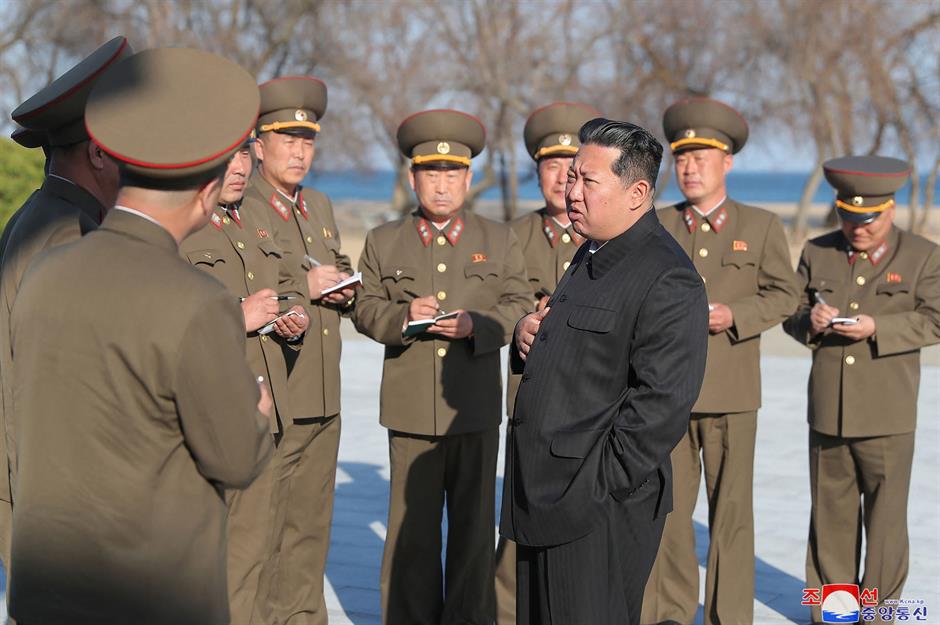
Living conditions are dismal for many ordinary people in North Korea, which has been run by an authoritarian, communist regime since 1948. Over the years, Kim Jong-un has spent huge amounts of money on a weapons programme and many other vanity projects, aimed more at shoring up support or showing off than meeting the needs of his people, who are now battling an outbreak of COVID-19.
As America warns that North Korea could launch a nuclear missile, test, "or frankly both" during President Biden's upcoming trip to Asia, read on through the unbelievable ways Kim Jong-un spends his regime’s money. All dollar amounts in US dollars.
A huge stadium
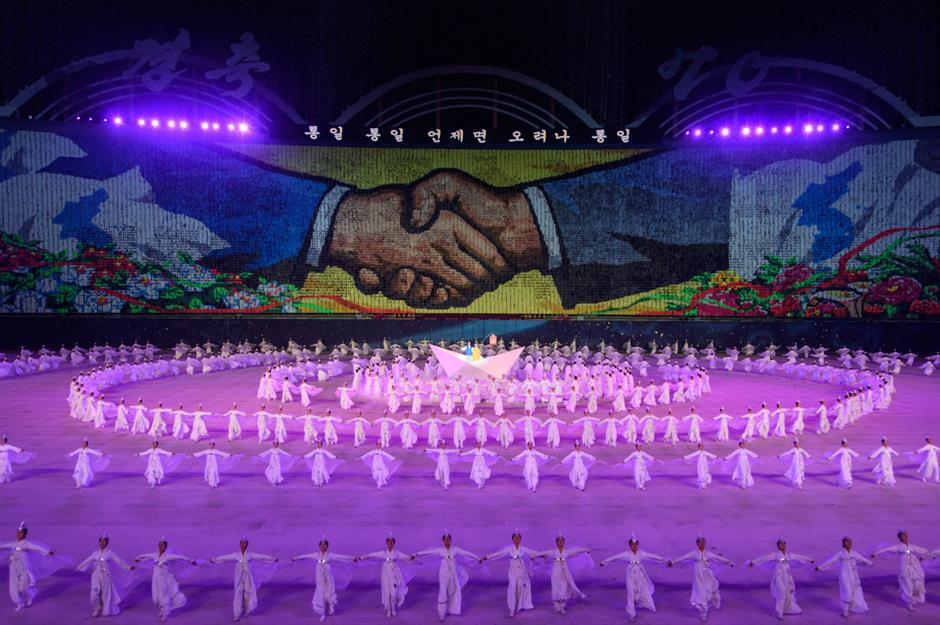
The Rungrado May Day Stadium in North Korea’s capital Pyongyang is one of the largest arenas in the world, and is said to be able to welcome 150,000 spectators. Built between 1986 and 1989, the stadium is estimated to have cost around $210 million (£121m) to build. The North Korean government decided to give it a makeover in 2013, so that it could also be used for major football matches. Yet the real point of the 150,000-seat venue is to host events like the annual Mass Games, a propaganda-filled celebration of the regime with tens of thousands of dancing performers – mostly children – that takes place between August and October.
A beach resort

Kim Jong-un used his 2018 New Year Speech to unveil proud plans to transform his birthplace Wonsan into a luxury beach resort. It’s an industrial port city, but he has high hopes of luring tourists from South Korea, Japan and beyond in future with pyramid-shaped hotels, private villas and an artificial lake, according to NK News. A giant construction programme commenced in 2018 – on a 4.5km stretch of coastline remote enough to keep a convenient distance between tourists and locals – and Donald Trump even gave North Korea's resort his seal of approval, lauding its "great beaches".
A beach resort
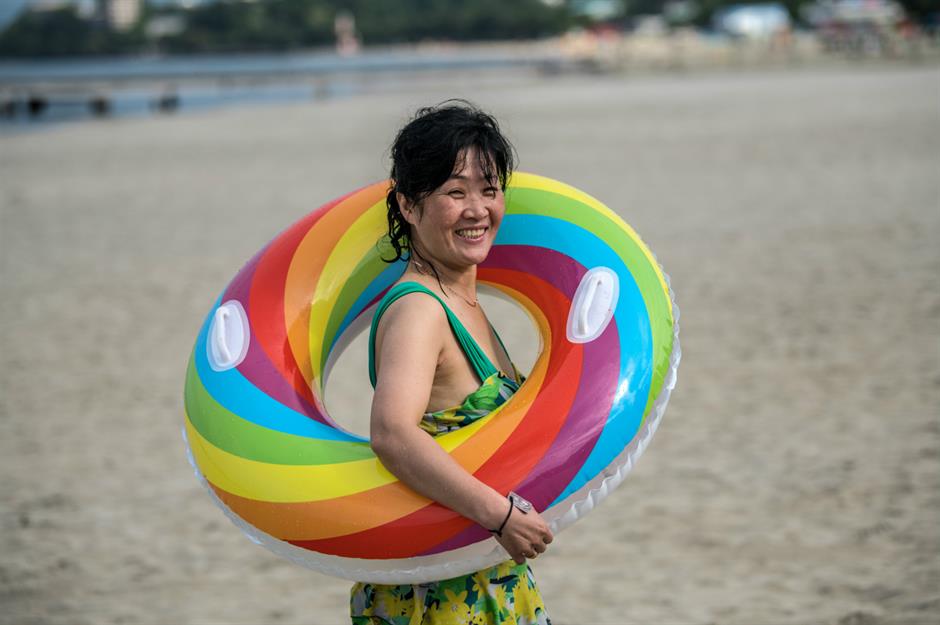
Tourism was one way the regime hopes to cast the country in a more positive light for both visitors and citizens, as well as generate income. It is one of only a few industries to have so far largely avoided international sanctions. But the coronavirus pandemic has brought the project to a standstill as the prospects for tourism have dwindled. Even when travel can recommence fully post-COVID-19, increased visitor numbers will probably still depend on improving relations with the outside world, as the country’s nuclear programme and belligerent rhetoric mean it is widely seen and treated as a rogue state.
Airports
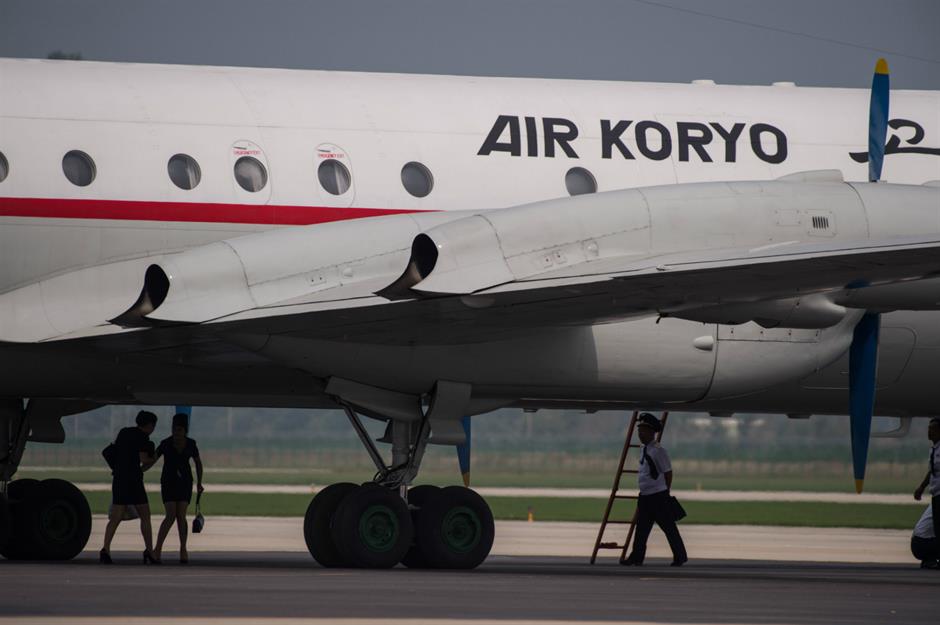
The regime’s top officials see modern airports as a key symbol of national pride, with two major construction projects in recent years. The first is an international terminal opened at Pyongyang airport in 2015, which looks the part with giant glass walls, a duty-free zone and even chocolate fountains. The second is a 500-metre airstrip at a former military airport transformed for civilian use in Wonsan, near both the planned beach resort and one of Kim Jong-un’s private palaces.
Airports

The airports may look like regular airports, but a closer inspection suggests it is all for show. In 2015, a journalist from The Guardian newspaper noticed Pyongyang airport’s ‘internet room’ did not actually offer the internet. In 2017, NK News reported that Wonsan’s airport had not hosted a single international flight since opening in 2015, while a mere one or two flights abroad leave the capital’s airport each day. The national airline, Air Koryo, is also regularly voted the worst in the world.
The 'Hotel of Doom'

North Korean officials may want the world to take notice of its parades, missile tests and airports, but there are certain projects they are probably desperate to keep out of the spotlight. One is the Ryugyong Hotel, a 105-floor pyramid-like building the regime started building in 1987. The Pyongyang landmark may have been the world’s tallest tower if finished as planned in 1989, but construction was delayed and then ground to a halt in 1992 when funds dried up during the period of economic crisis that followed the breakdown of the Soviet Union, which had been supporting North Korea's economy.
The 'Hotel of Doom'
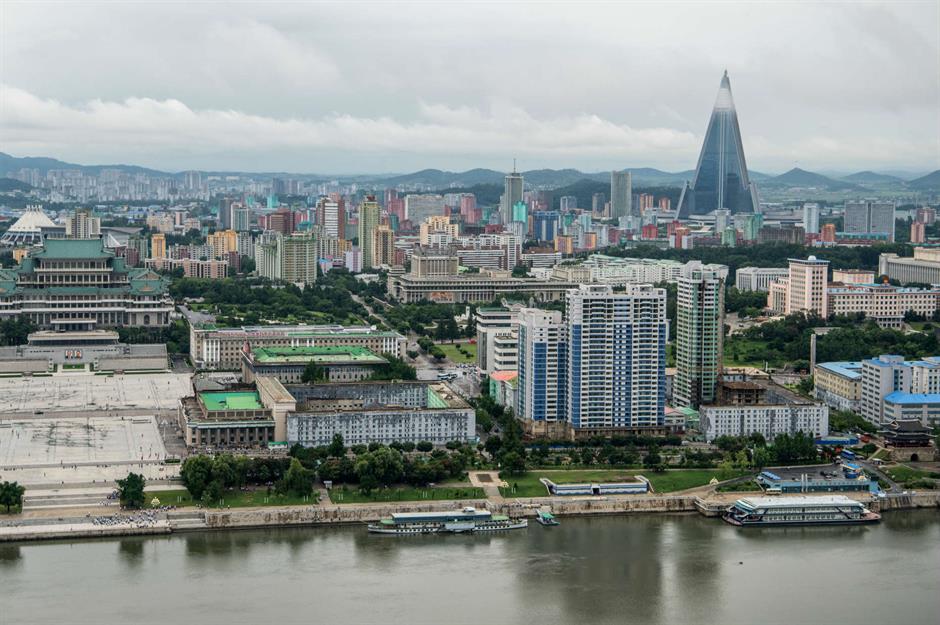
For years it was just a concrete shell until work resumed on the billion-dollar 'Hotel of Doom' in 2008, but only the exterior glasswork was finished. Construction didn't start again until 2017, when access roads were added, and in 2019 LED displays were attached to the building. Despite this progress today the hotel remains empty, and it can now only claim the title of the world’s highest unoccupied building instead at 1,080 feet (329m) tall.
See some other expensive megaprojects that went wrong
Pyonghattan

Pyonghattan
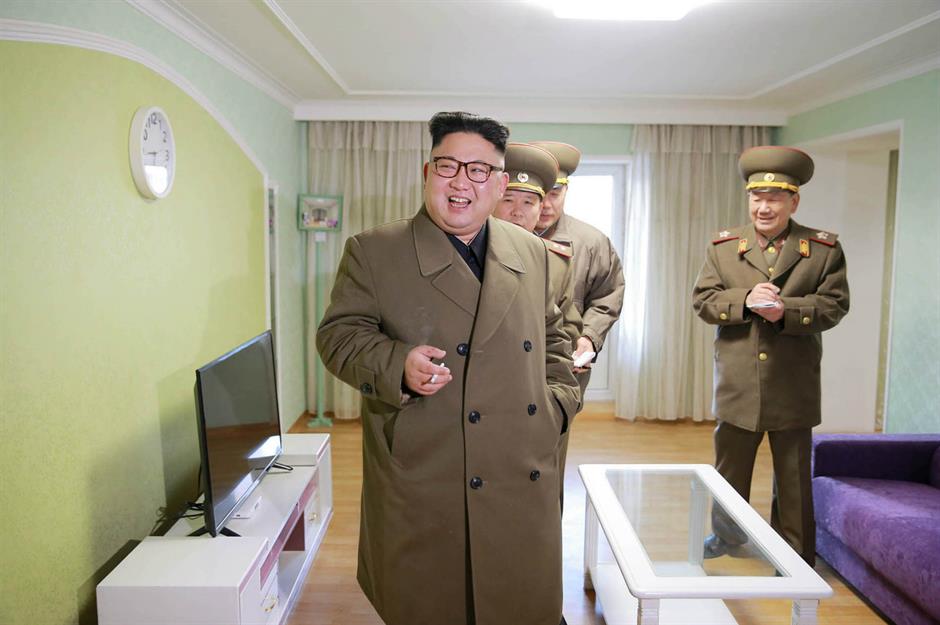
The often brightly-coloured new high-rises mark a stark contrast to the overwhelmingly grey, uniform towers that used to define the capital. Behind the veneer of sophistication is a darker picture, with allegations of child labour on building sites and faulty construction work, according to The Daily Telegraph. Senior officials were reportedly executed after one apartment block collapsed, with many residents killed in the disaster.
Luxury goods
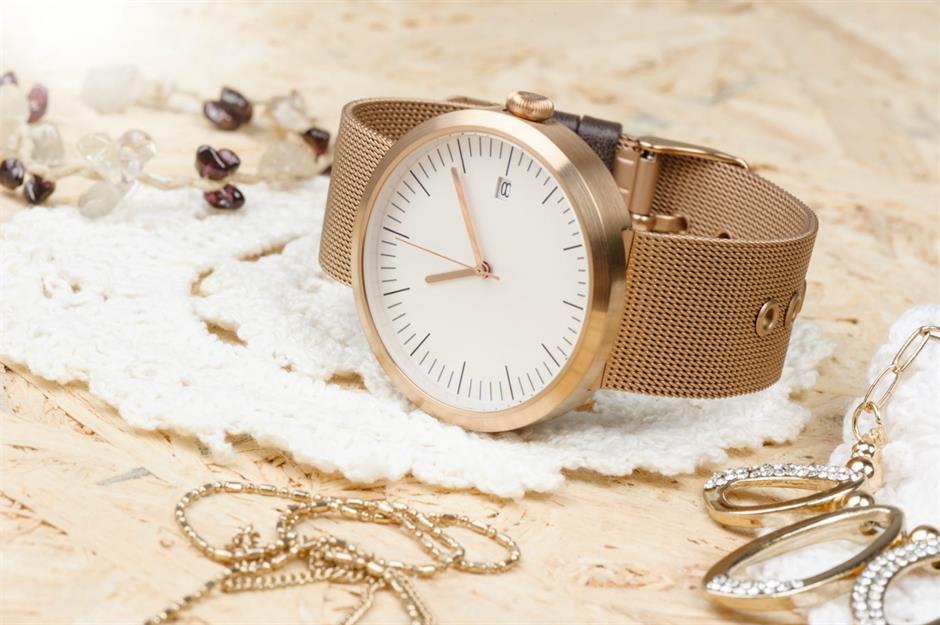
Luxury goods imports have soared since Kim Jong-un took power in 2011. The leader of North Korea has a taste for expensive goods, with a watch collection thought to be worth $8.2 million (£6m) according to The Telegraph. It's also been reported that he has up to 100 cars, including many from his favourite car brand Mercedes-Benz.
Luxury goods
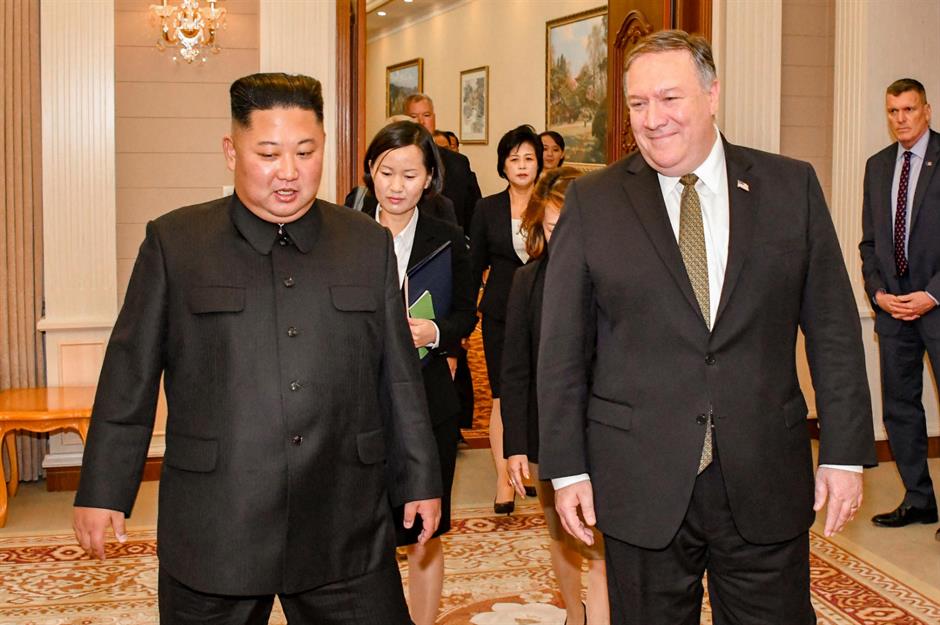
Kim Jong-un himself raised eyebrows by showing up to a meeting with US Secretary of State Mike Pompeo in 2018 in what looked like a new Rolls-Royce, worth around $419,000 (£318k). One expert told The Daily Telegraph it suggested the UN sanctions regime was a “bit of a joke”, given such cars supposedly cannot be sold to his politically isolated regime. The Supreme Leader appears to have a taste for the high life...
A superyacht

A private jet...

...and even private runways
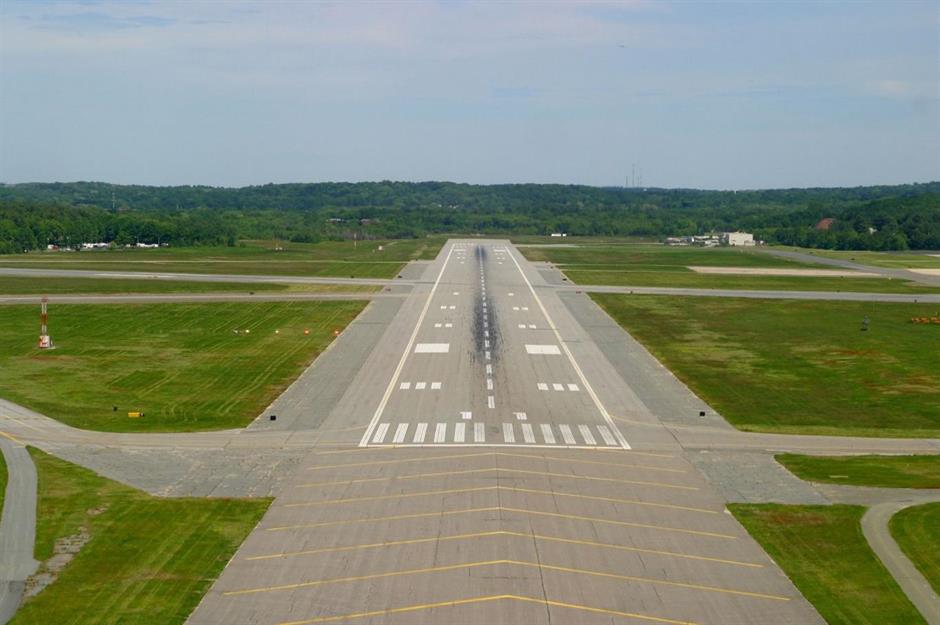
Museum of foreign gifts

The regime might not be able to maintain good relations with the rest of the world, but it is certainly trying hard to maintain the pretence of global respect for a domestic audience. It runs a huge museum of gifts from other countries solely to that end, with a collection believed to hold more than 100,000 items dating back to the 1940s. Many ordinary citizens are shown around the International Friendship Exhibition hall, which is built into a mountain, according to The Independent.
Museum of foreign gifts
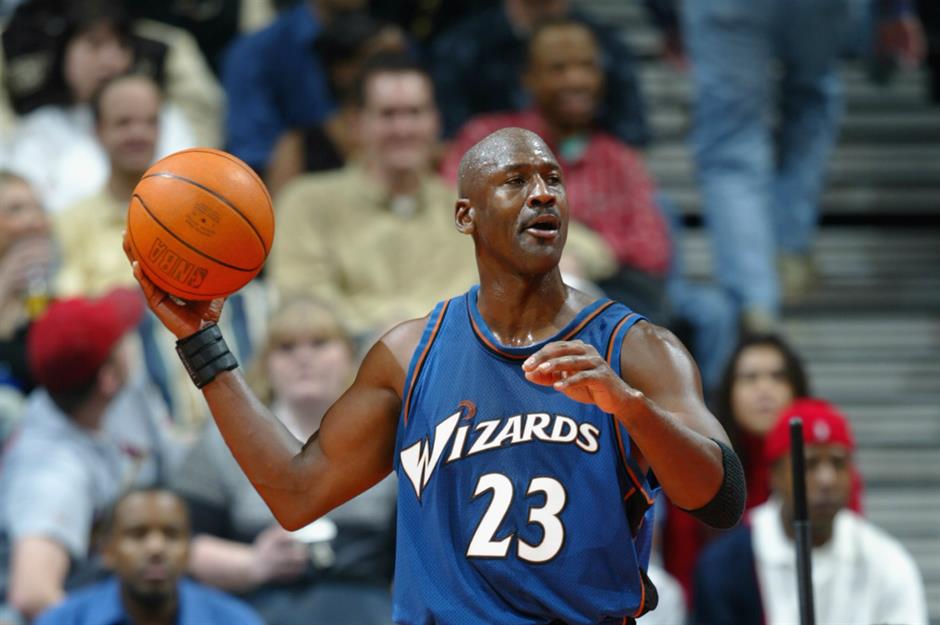
Water park
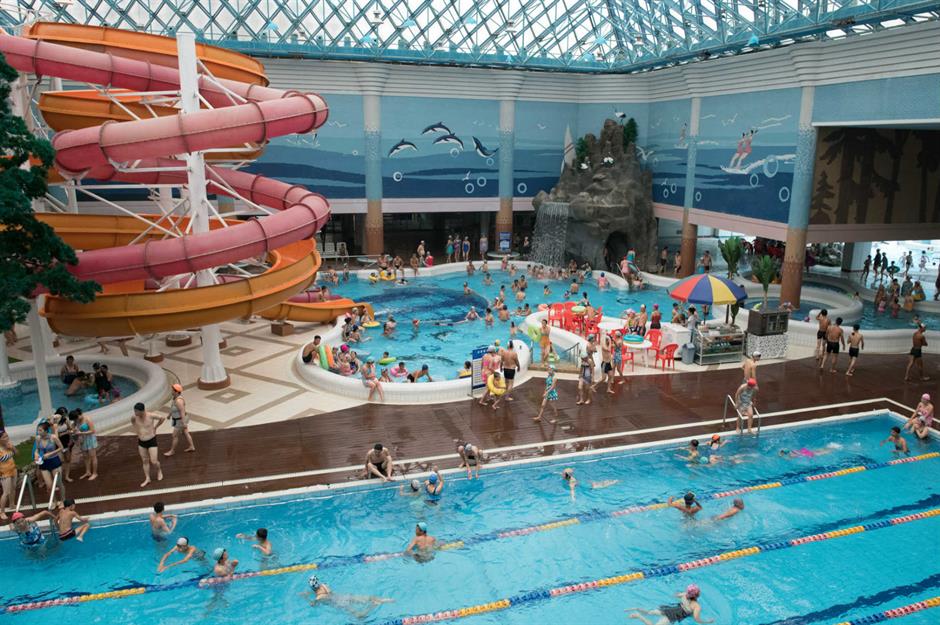
Kim Jong-un's father had a soft spot for grand military monuments, but his son appears to see Western-style leisure facilities as important in cementing support. The vast Munsu Water Park opened in around 2013, boasting indoor and outdoor pools, many slides, wave machines, a gym and even a brewery, according to The Daily Mirror. "This could be Florida or Dubai, if it wasn’t for the unnervingly lifelike waxwork of the Eternal Chairman," one visiting journalist from The Guardian wrote.
Water park
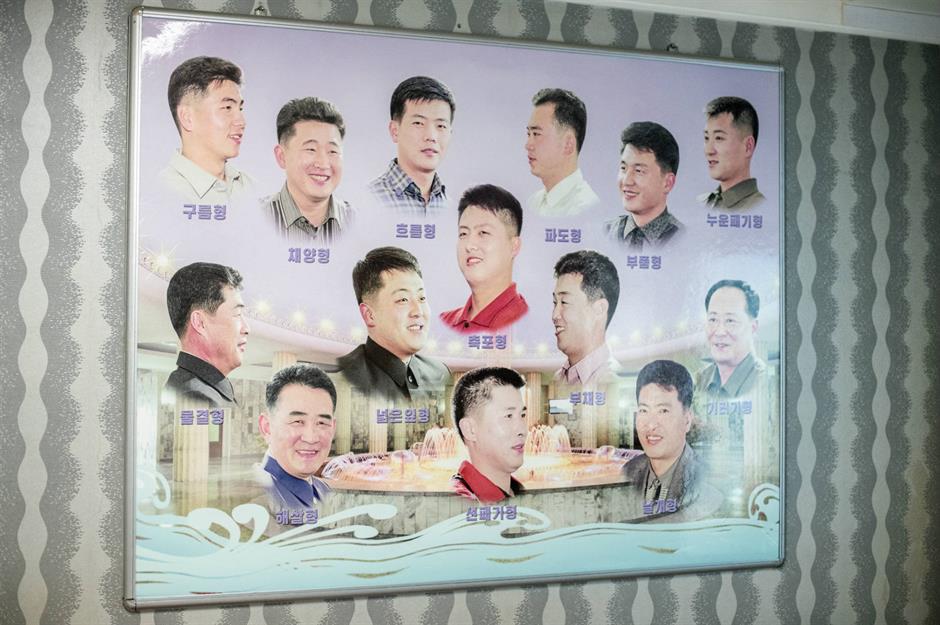
Ski resort
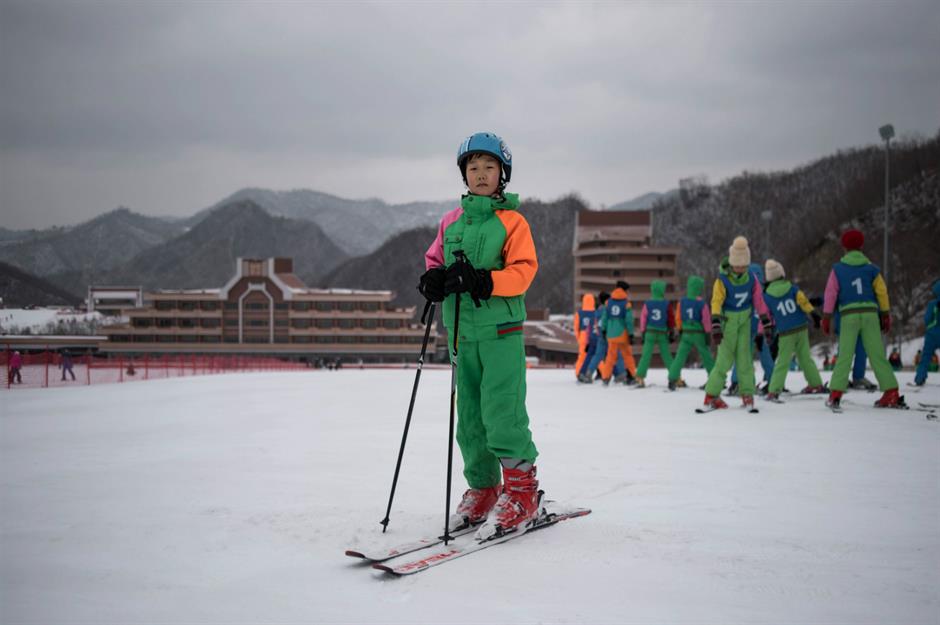
North Korea’s luxury ski resort opened in 2013, with an estimated $35 million (£25.6m) spent by a government that can barely provide healthcare for its people. The Masikryong resort features almost 70 miles (112km) of ski runs and chalets that wouldn’t look out of place in a European resort, The Guardian reports. It appears to be another initiative designed to show North Korea can rival other nations when it comes to high-end cultural activities.
Ski resort
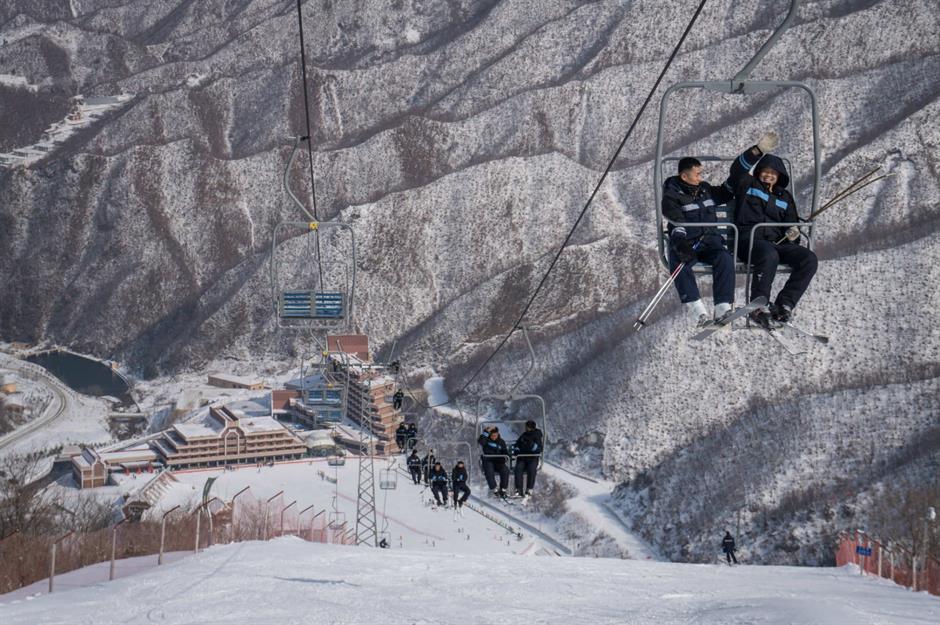
It has been speculated by The Daily Telegraph that Kim Jong-un’s privileged upbringing at a boarding school in Switzerland may have given him a taste for skiing. It could also be to help lift the country’s sporting reputation by improving its performance in future Winter Olympics, according to the BBC. Barely any citizens can enjoy it, however, in a country where just 0.02% of people are thought to ski.
Dolphin aquarium
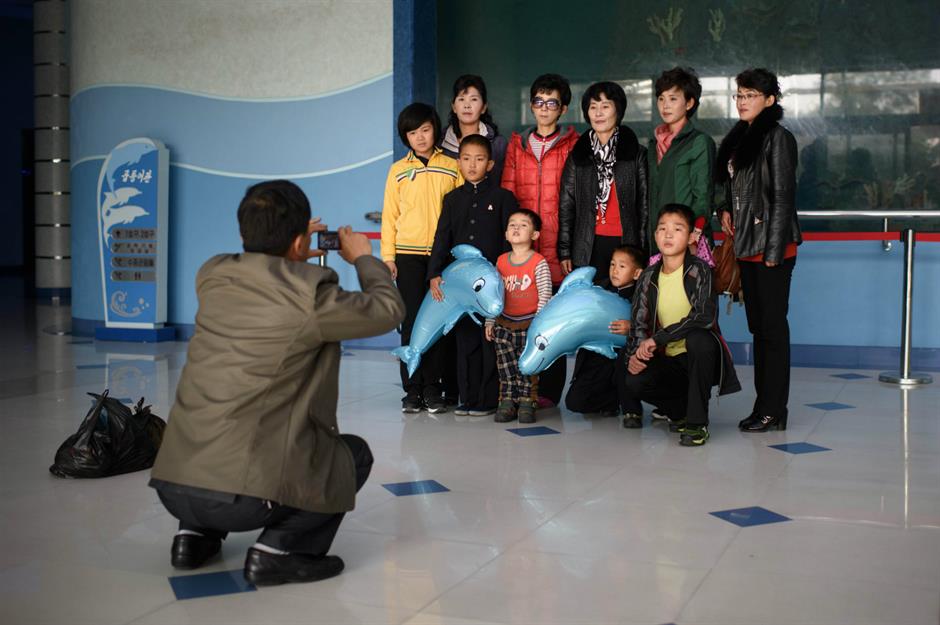
In 2012 North Korean chiefs were so keen to ensure the success of their new dolphin aquarium that they sent newly recruited dolphin trainers to China to learn their craft. The pristine facility in Pyongyang also uses seawater pumped along a specially-constructed 68-mile (100km) pipeline into its pools. It is part of the Rungna People’s Pleasure Ground, a theme park with roller coasters, a mini golf course and 4D cinema.
Dolphin aquarium
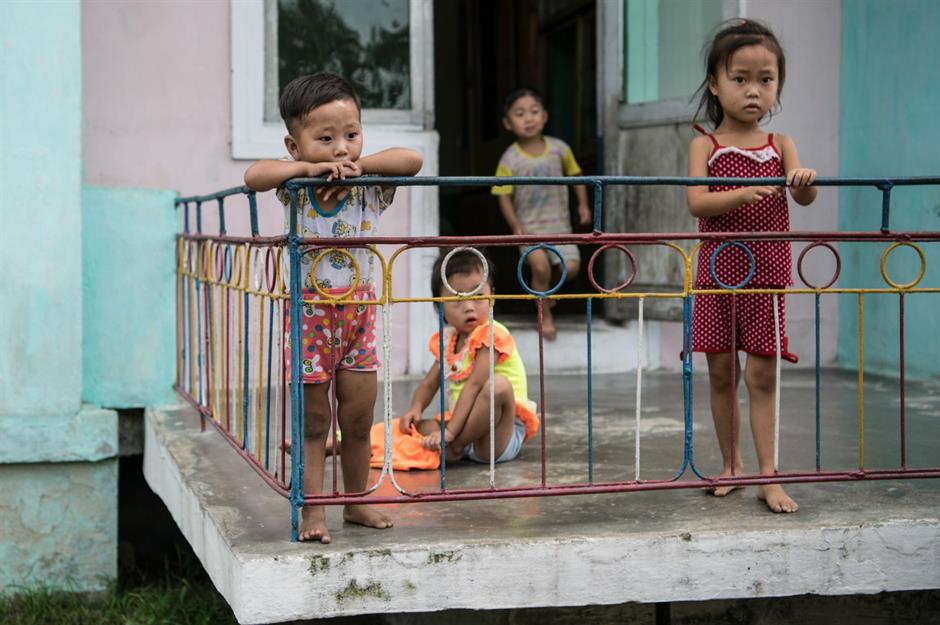
Few local children will ever get the chance to visit attractions like the aquarium. Around a fifth of children are malnourished, many face stunted growth and child labour is widespread in farming, construction and mining, according to the UN. Such figures make dolphin shows look even more cruel, but "if Kim is trying to reinforce North Koreans' impressions of their national prosperity, building the best possible luxury destinations is probably an effective way to do it," as The Atlantic put it.
Kim Jong-un's reference to food shortages in his New Year speech was unexpected, and it remains to be seen whether his intention to increase agricultural productivity will result in greater food reserves, or simply cause more back-breaking work for the nation's farmers. Though he didn't specify the extent of the problem, the UN has estimated the country lacks around 860,000 tonnes of food.
Military and nuclear spending

North Korea’s ruling elites have always used grand displays of military might to help prop up support for their regime. Kim Jong-un seems to have a particular fondness for nuclear weapons, carrying out four of the six nuclear tests ever done in the country and facing off with former US President Donald Trump over the issue. In only a few years he has also tested more missiles than his father and grandfather combined, with 23 tests in 2017 alone and 14 so far this year, according to Reuters.
Estimates by America's World Military Expenditures and Arms Transfers suggest that North Korea spent up to $4.2 billion (£3bn) every year on its military between 2007 and 2017, which equates to between 21.9% and 24.4% of its GDP. These figures are extremely high by international standards, and all the more staggering when so many basic services are sorely lacking for ordinary people. The South Korean government suggests that North Korea has spent more than $3.2 billion (£2.3bn) on nuclear development alone.
Military and nuclear spending

In January 2021, North Korea unveiled a submarine-launched ballistic missile during a parade for the 8th Congress of the Workers' Party, just days before Joe Biden's presidential inauguration ceremony in the US. During the parade Kim Jong-un declared America to be North Korea's "prinicipal enemy". North Korea then released three photos (including this one) of its leader inspecting the submarine launcher in a shipyard. Experts say it could be big enough to carry nuclear weapons and allow the leader to order nuclear strikes from unknown locations.
As President Biden prepares for an upcoming trip to South Korea and Japan, the US has warned that North Korea could seize the opportunity to launch yet another ballistic missile, nuclear test, "or frankly both", according to national security adviser Jake Sullivan.
Military and nuclear spending

And the recent missile tests show that even a global pandemic isn't stopping his ambitions. After firing a series of ballistic missiles in 2021, Kim Jong-un kicked off 2022 by launching one of the nation's two hypersonic missiles. (Hypersonic missiles are weapons that can travel at least five times faster than the speed of sound).
Although a South Korean official has doubted the missile is as powerful as its northern neighbour claims, it still demonstrates the country's commitment to flexing its military might. The US has responded by imposing its first sanctions on North Korea's weapon programme, as well as on a Russian firm that's believed to have supplied the necessary materials.
Now see the shocking secrets of Kim Jong-un's luxury life
Or read about the legal and illegal jobs ordinary North Koreans do to survive
Comments
Do you want to comment on this article? You need to be signed in for this feature